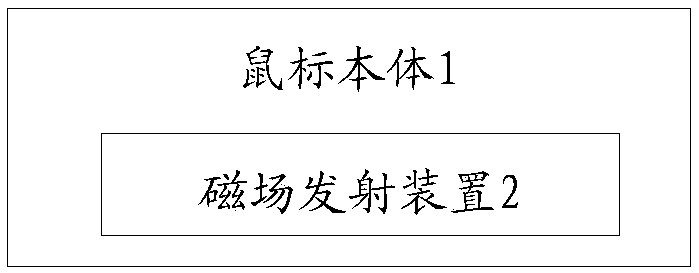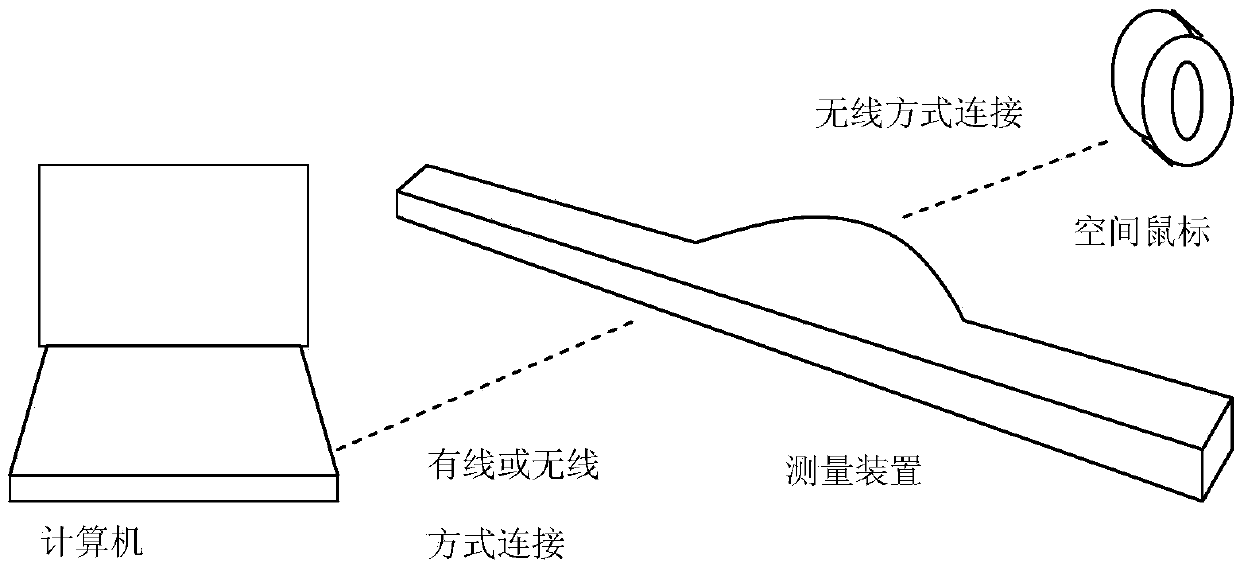Space mouse used for human-computer interaction, and electromagnetic positioning method
A space mouse and human-computer interaction technology, applied in the field of electromagnetic tracking, can solve the problems of high cost and large number of sensors, and achieve the effect of low cost and large number
- Summary
- Abstract
- Description
- Claims
- Application Information
AI Technical Summary
Problems solved by technology
Method used
Image
Examples
Embodiment 1
[0050] Such as figure 1 As shown, the space mouse for human-computer interaction provided by the embodiment of the present invention includes: a mouse body and a magnetic field emitting device arranged inside the mouse body; wherein,
[0051]The magnetic field emitting device is used to emit a magnetic field, so that the preset measuring device measures the magnetic induction intensity in the space, determines the spatial position of the space mouse according to the measured magnetic induction intensity in the space, and the determined space mouse The spatial position is sent to the computer, and the computer works according to the received spatial position of the spatial mouse;
[0052] Wherein, the measuring device includes: two magnetic induction intensity sensors, and the positional relationship between the two magnetic induction intensity sensors is determined.
[0053] The space mouse for human-computer interaction described in the embodiment of the present invention me...
Embodiment 2
[0074] Such as Figure 4 As shown, the embodiment of the present invention also provides an electromagnetic positioning method, including:
[0075] S101. Obtain the magnetic induction measured by the first magnetic induction sensor and the second magnetic induction sensor respectively;
[0076] S102. According to the predetermined positional relationship between the first magnetic induction sensor and the second magnetic induction sensor, and the acquired magnetic induction measured by the first magnetic induction sensor and the second magnetic induction sensor, determine the Space The position of the mouse in space.
[0077] The electromagnetic positioning method described in the embodiment of the present invention obtains the magnetic induction measured by the first magnetic induction sensor and the second magnetic induction sensor respectively; according to the predetermined relationship between the first magnetic induction sensor and the second magnetic induction sensor ...
PUM
 Login to View More
Login to View More Abstract
Description
Claims
Application Information
 Login to View More
Login to View More - R&D
- Intellectual Property
- Life Sciences
- Materials
- Tech Scout
- Unparalleled Data Quality
- Higher Quality Content
- 60% Fewer Hallucinations
Browse by: Latest US Patents, China's latest patents, Technical Efficacy Thesaurus, Application Domain, Technology Topic, Popular Technical Reports.
© 2025 PatSnap. All rights reserved.Legal|Privacy policy|Modern Slavery Act Transparency Statement|Sitemap|About US| Contact US: help@patsnap.com



